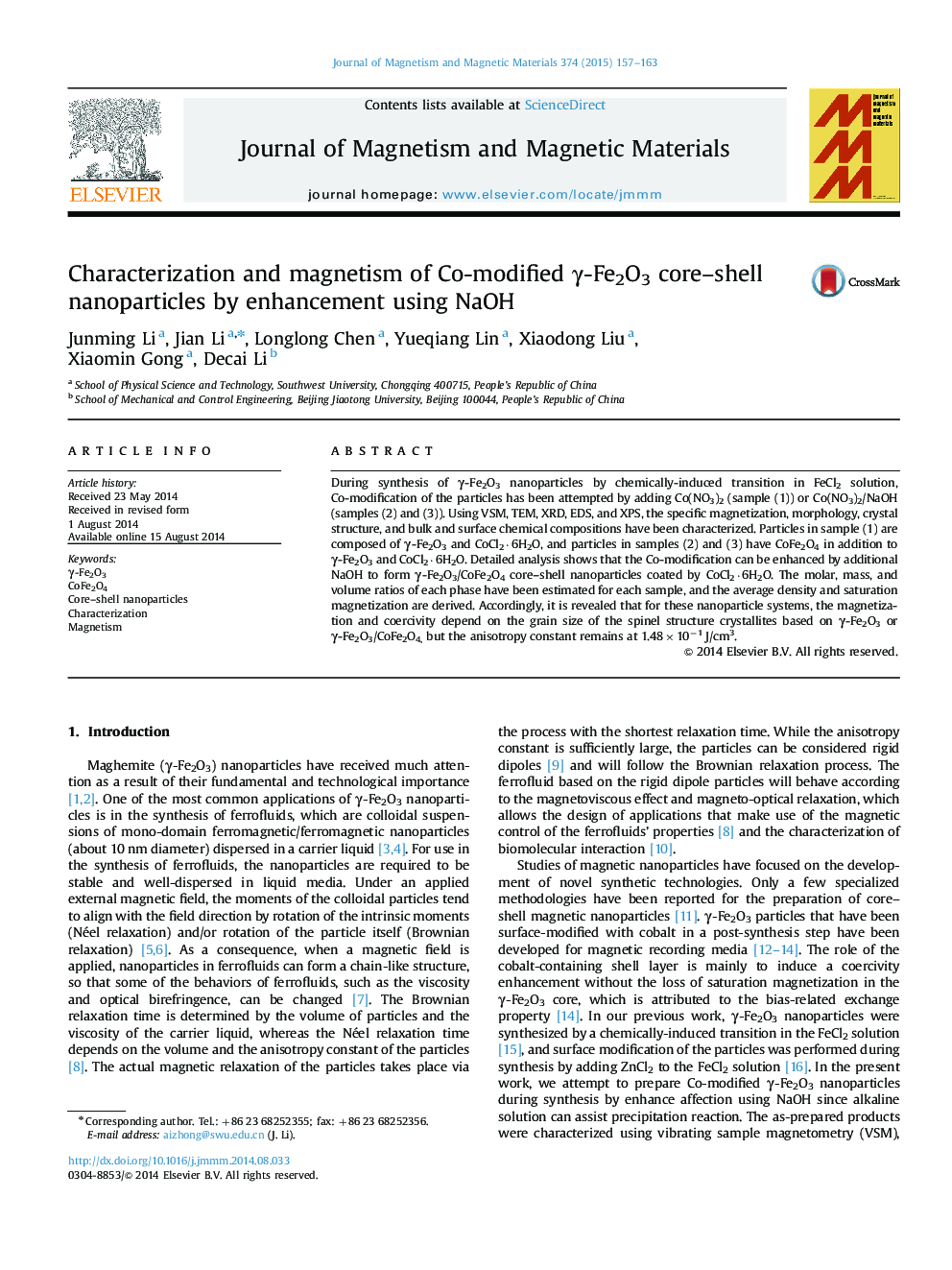| Article ID | Journal | Published Year | Pages | File Type |
|---|---|---|---|---|
| 8156323 | Journal of Magnetism and Magnetic Materials | 2015 | 7 Pages |
Abstract
During synthesis of γ-Fe2O3 nanoparticles by chemically-induced transition in FeCl2 solution, Co-modification of the particles has been attempted by adding Co(NO3)2 (sample (1)) or Co(NO3)2/NaOH (samples (2) and (3)). Using VSM, TEM, XRD, EDS, and XPS, the specific magnetization, morphology, crystal structure, and bulk and surface chemical compositions have been characterized. Particles in sample (1) are composed of γ-Fe2O3 and CoCl2·6H2O, and particles in samples (2) and (3) have CoFe2O4 in addition to γ-Fe2O3 and CoCl2·6H2O. Detailed analysis shows that the Co-modification can be enhanced by additional NaOH to form γ-Fe2O3/CoFe2O4 core-shell nanoparticles coated by CoCl2·6H2O. The molar, mass, and volume ratios of each phase have been estimated for each sample, and the average density and saturation magnetization are derived. Accordingly, it is revealed that for these nanoparticle systems, the magnetization and coercivity depend on the grain size of the spinel structure crystallites based on γ-Fe2O3 or γ-Fe2O3/CoFe2O4, but the anisotropy constant remains at 1.48Ã10â1 J/cm3.
Related Topics
Physical Sciences and Engineering
Physics and Astronomy
Condensed Matter Physics
Authors
Junming Li, Jian Li, Longlong Chen, Yueqiang Lin, Xiaodong Liu, Xiaomin Gong, Decai Li,
